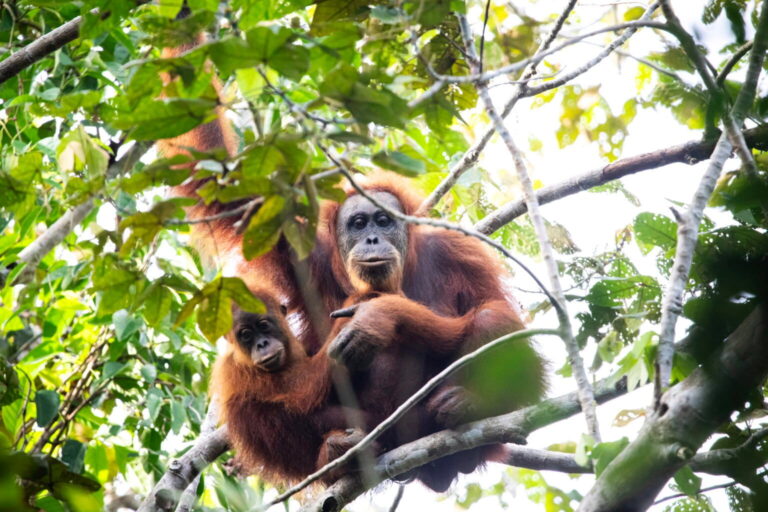- Chinese financial institutions have little awareness about the risks of deforestation in the soy supply chain, according to a report released May 31 from the nonprofit disclosure platform CDP.
- China imports more than 60 percent of the world’s soy, meaning that the country could play a major role in halting deforestation and slowing climate change if companies and banks focus on stopping deforestation to grow the crop.
- Around 490 square kilometers (189 square miles) of land in Brazil was cleared for soy headed for China in 2017 — about 40 percent of all “converted” land in Brazil that year.
- As the trade war between the U.S. and China continues, China may increasingly look to Latin America for its soy, potentially increasing the chances that land will be cleared to make way for the crop.
The homegrown banks that back the flood of soy into China have with little knowledge of the deforestation their funding is potentially supporting, according to the nonprofit CDP, an international platform for the disclosure of environmental risks.
As negotiations to end a trade war between China and the U.S. remain scuttled, the report raises the concern that China may increasingly turn to Latin America, and Brazil in particular, where vast tracts of the Amazon have been razed to make way for soy plantations.
“Chinese companies and financial institutions operating within the soy sector demonstrate extremely limited awareness and action to mitigate forests-related risks with potentially grave consequences for forests,” Morgan Gillespy, the director of forests at CDP, said in an email to Mongabay.

In a report published May 31, CDP traces the funding to some 30 Chinese soy-related companies, ranging from importers to animal feed manufacturers to livestock breeders. The organization’s analysis of the supply chain to China, which imports nearly two-thirds of the soy on the international market, revealed that more than 40 percent of loans to these companies, worth $2.1 billion, bear the risk that they may have financed deforestation. More than $7 billion of bonds and shares to underwrite these companies also carry similar risk.
What’s more, Gillespy said, “These figures are only set to grow with China’s increasing reliance on soy imported from Brazil.”
According to CDP’s research, in 2017, Brazilian soy exported to China was associated with more than 490 square kilometers (189 square miles) of land conversion risk, accounting for 35% of all the soy land conversion risk. Globally, 80 percent of deforestation stems from turning over forest for agriculture to grow food for livestock and human consumption. If China committed to rooting our deforestation, it could help keep global temperatures below a 1.5-degree-Celsius (2.7-degree-Fahrenheit) rise over pre-industrial levels as outlined in the Paris climate accords, Gillespy said.
But currently, “CDP’s research found that none of the 35 financial institutions we looked at have assessed the proportion of their capital that is exposed to deforestation risks, nor has acquired the data and tools to quantify these risks,” she said.

The few that do have policies to address environmental issues — less than 25 percent of the banks in the study — typically focus on local pollution control.
“This also presents a great opportunity for financial institutions that can be first movers on this issue given deforestation risk isn’t going away anytime soon,” Gillespy added.
In addition to the potential for driving forest loss, these Chinese banks could be rolling the dice with their reputations.
“Deforestation is an overlooked yet critical source of risks posed to Chinese financial institutions, and these risks should be considered in financial decision-making,” Gillespy said.
Recently, global banks have bolstered their sustainability pledges as a way to stave off the bad press that comes with being associated with forest clearance. HSBC, for example, now requires clients in the soy sector to be certified by the Round Table on Responsible Soy, after numerous reports tied funding flows from the bank to companies accused of deforestation as well as human rights violations.

Similarly, London-based HSBC, which finances a lot of palm oil production in Southeast Asia, now requires that its clients adhere to the requirements for membership in the Roundtable on Sustainable Palm Oil, a standard that no Chinese companies have been able to meet, the bank told CDP.
“For many companies, awareness is the first step,” Gillespy said, “and we call on all Chinese companies within the soy sector to undertake a risk assessment to understand their exposure to imported soy, with a particular focus on soy coming from Latin America.”
The report outlines several other recommendations for financial institutions working in the soy sector, including analyzing those risks, developing policies to address them and working with suppliers to lower the chance that soy linked to deforestation enters their supply chains.
“China is an important player in the global commodities market,” Gillespy said. “By demanding deforestation-free commodities, Chinese companies and financial institutions can play a huge role in tackling commodity-driven deforestation whilst ensuring they effectively mitigate their exposure to forests-related risks.”
Banner image of soy in Brazil by Rhett A. Butler/Mongabay.
John Cannon is a staff writer at Mongabay. Find him on Twitter: @johnccannon
Correction: This post was updated to include a correction to the report after its publication. In 2017, more than 490 square kilometers (189 square miles) was associated with land conversion risk, not land conversion, which accounted for 35 percent of all soy-related land conversion risk.
FEEDBACK: Use this form to send a message to the author of this post. If you want to post a public comment, you can do that at the bottom of the page.














